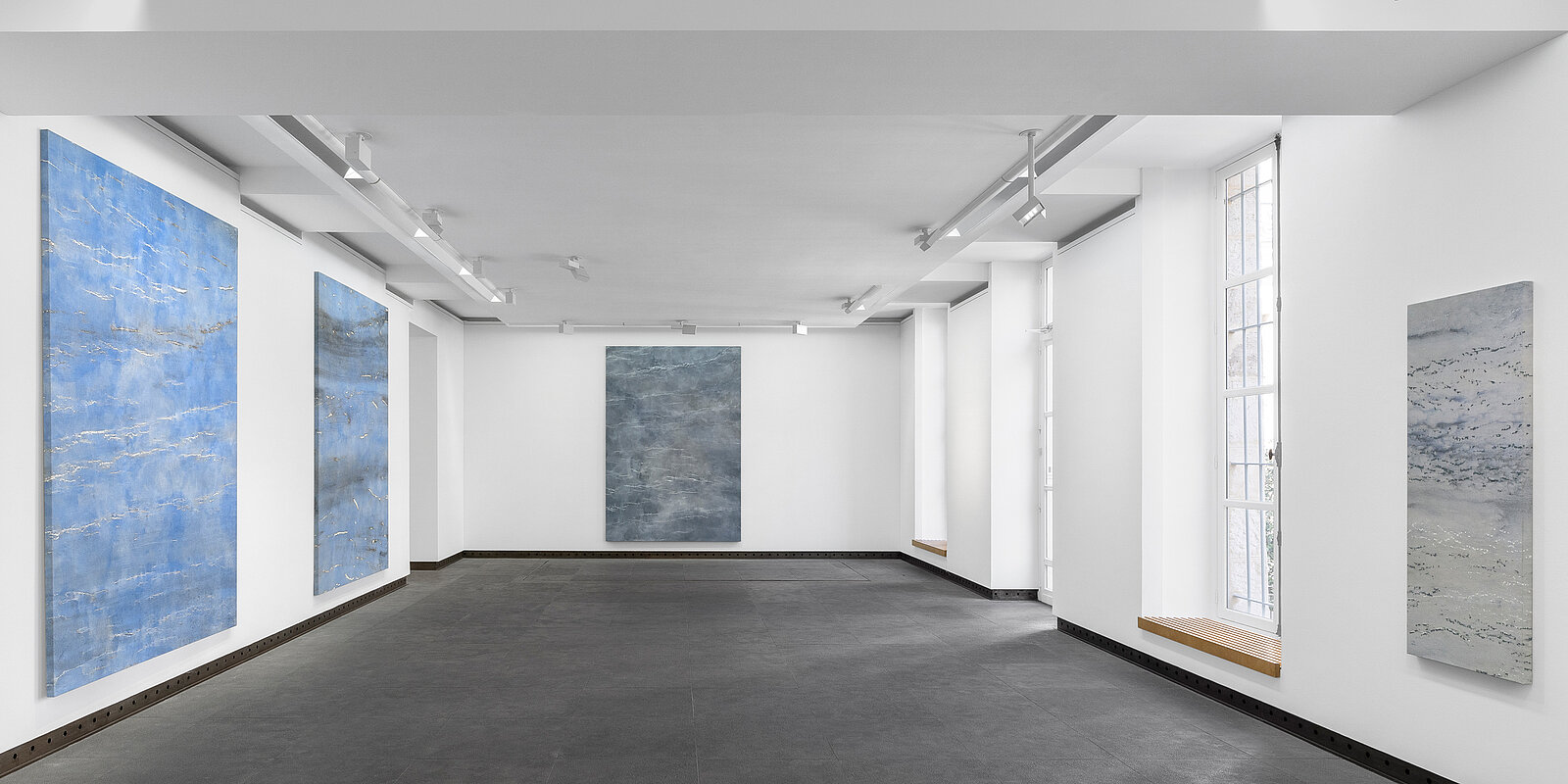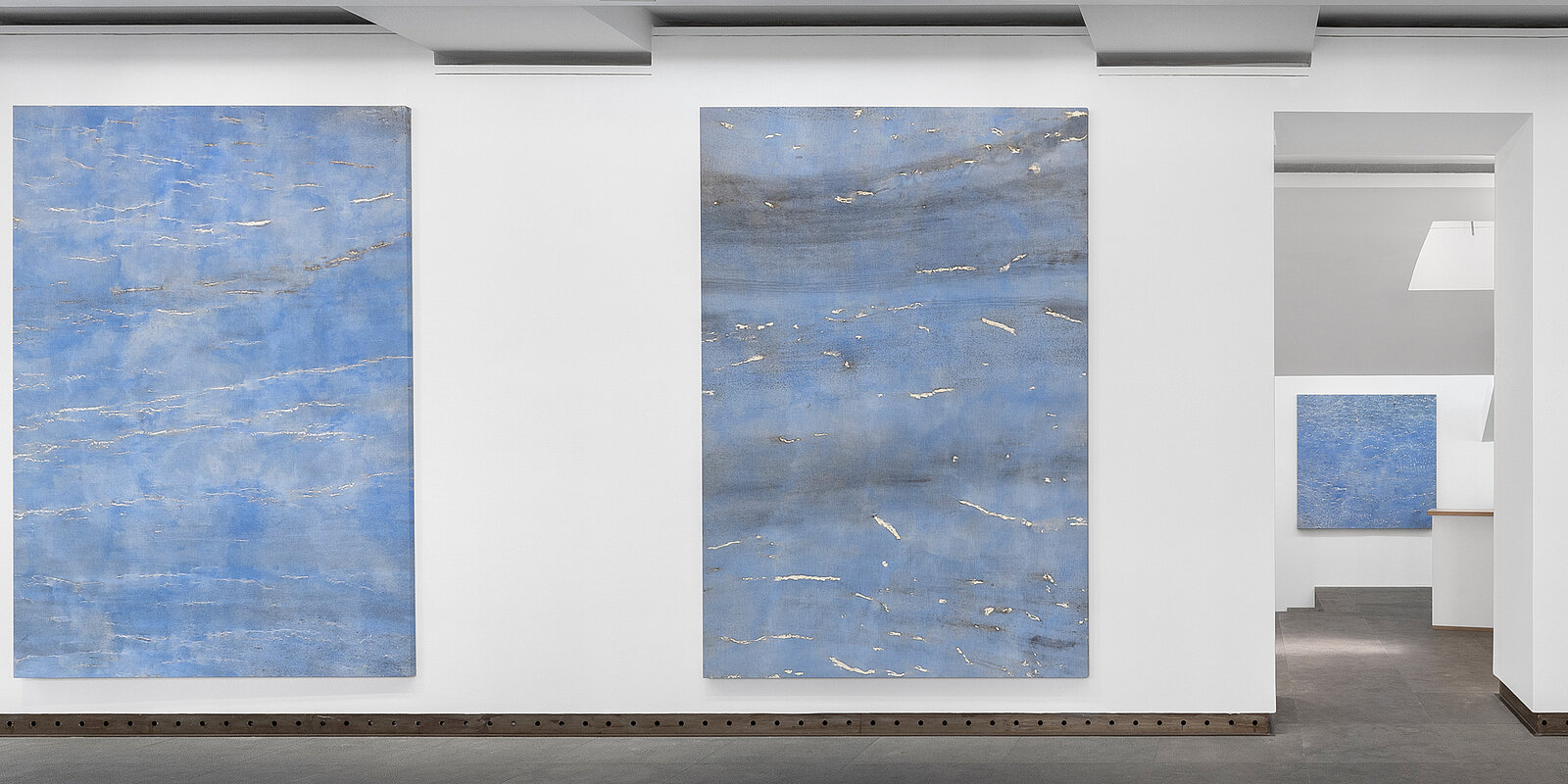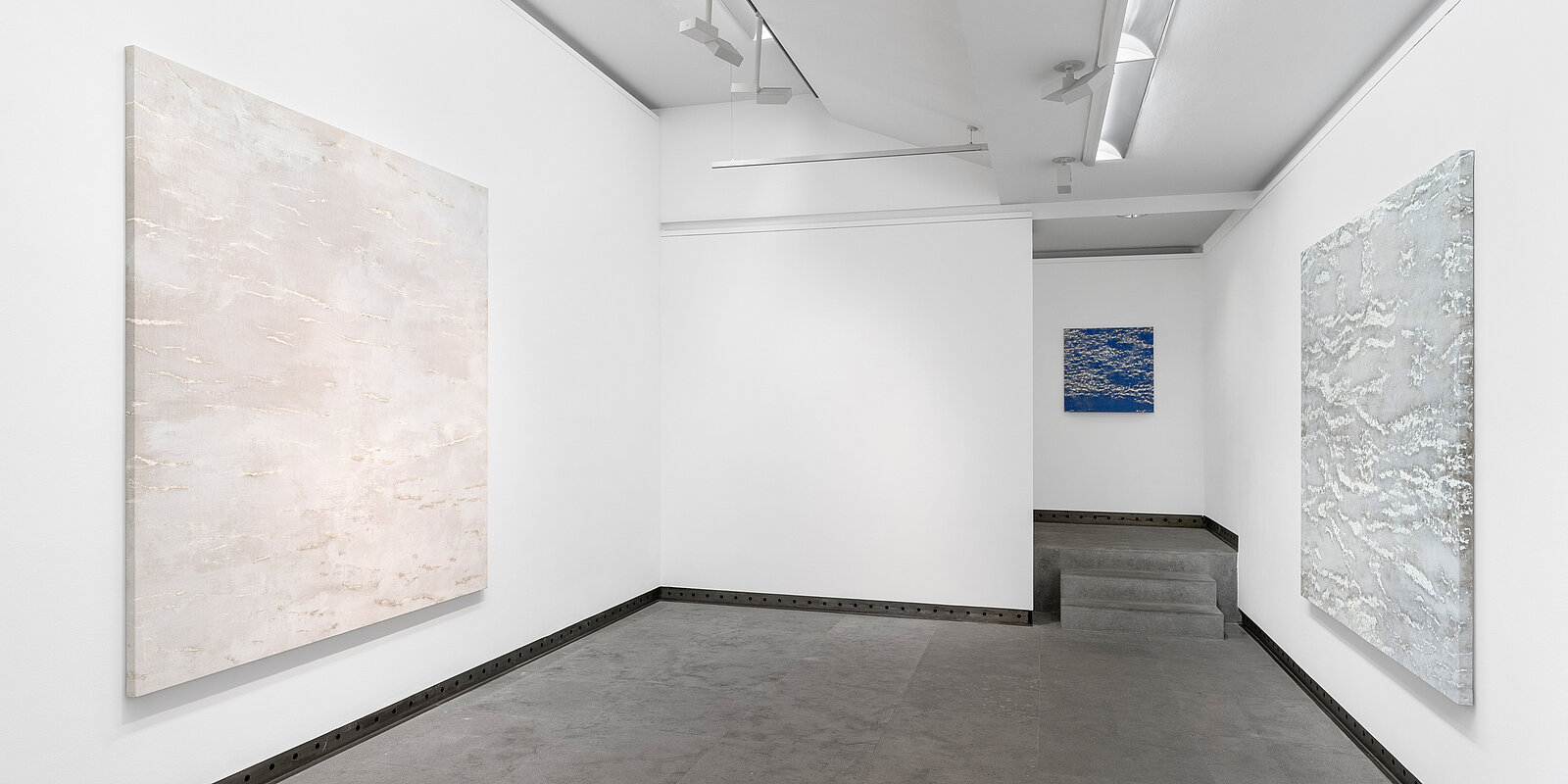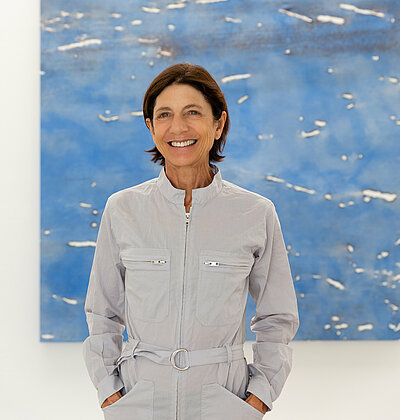Kathleen Jacobs: Kathleen Jacobs - LUMEN
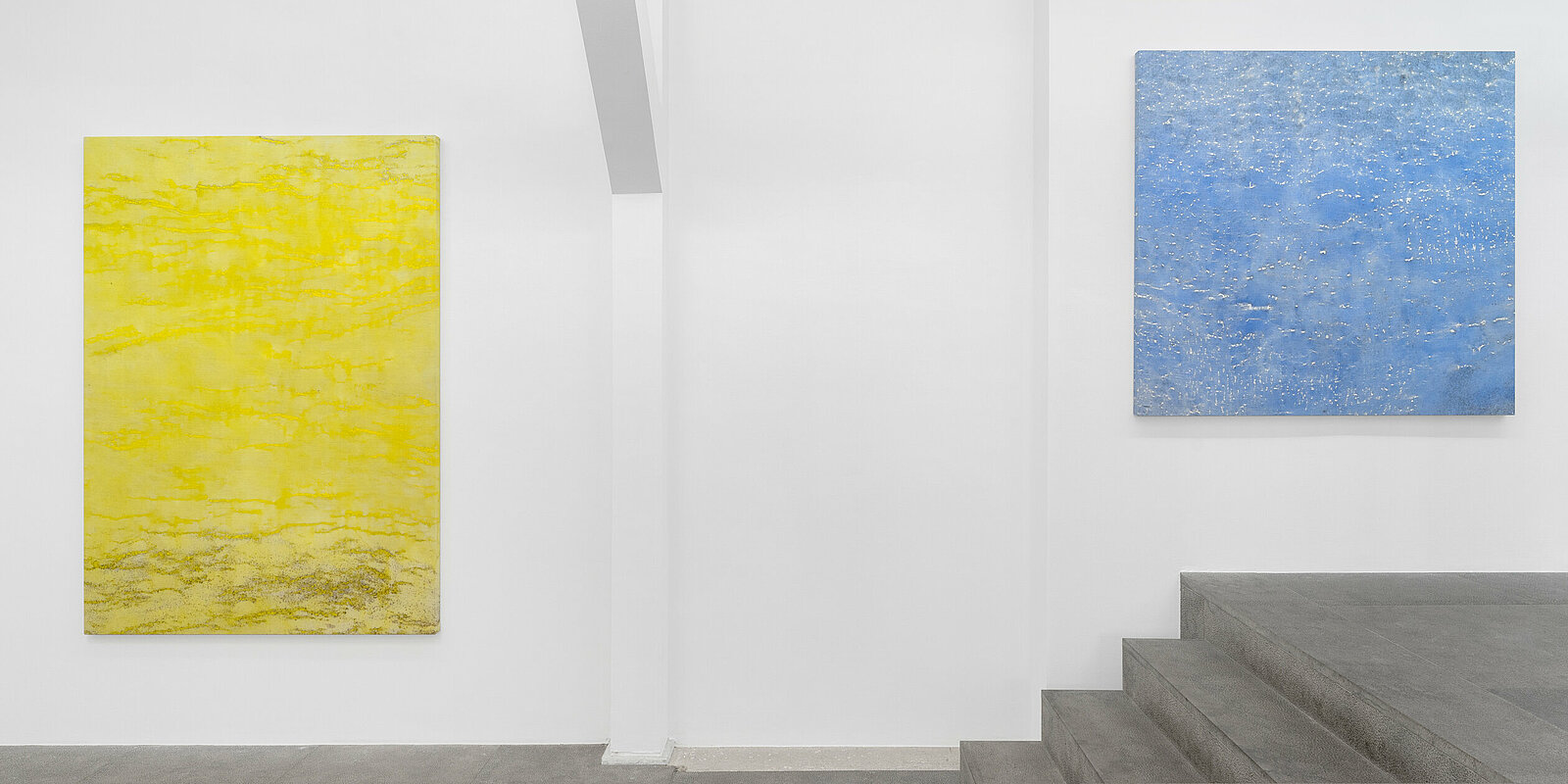
Galerie Karsten Greve Paris
Dienstag - Samstag 10 - 19 Uhr
Vernissage am Donnerstag, den 7. September 2023 von 18 - 20 Uhr.
Die Künstlerin ist anwesend.
English Version
Galerie Karsten Greve is happy to host the American artist Kathleen Jacobs at its Parisian gallery for the first time. In this exhibition entitled LUMEN, the artist unveils works on paper and on canvas produced between 1990 and 2023.
Poetic and subtle, Kathleen Jacobs’ work is rooted in her personal experience, forged between tradition and artistic encounters.
Her fascination with trees, first of all, began with In Search of Times Past (1959), a work by the Austrian Bauhaus photographer Herbert Bayer (1900-1985). The photograph, with its surrealist accents, representing a settlement of aspens superimposed with eyes, hung on the wall of her father’s office, where it gradually permeated her subconscious and, later, her art.
Then came the decisive influence of her four-year trip to China, between 1984 and 1988, when she learned the art of calligraphy from her father-in-law, the Chinese artist Huang Yongyu (recognised in China as a Living National Treasure). In China, through that practice, Kathleen Jacobs learned the value of practising and learning, the Tao way (“Tao” meaning way or path). She also learned the meaning of space in painting, particularly through the landscapes of the Tang, Song and Ming dynasties, characterised by consecutive bare spaces and the absence of a horizon.
“The calligraphy practice helps me warm up before painting”, she said. The watercolours and ink-on-paper works displayed in the exhibition are figurative works reflecting those oriental traditions, whether in the representation of landscapes and nature or in the mastery of lines and their movement. Calligraphy taught her to use her whole body to guide the paintbrush, in a perpetual awareness of its movement and her intention.
Her first works thus naturally represent landscapes, with trees as the main subjects. However, soon after her return to the United States, in 1989, Kathleen Jacobs realised that, in her desire to copy trees, her interpretation and expertise could never do her subject justice. She explained: “I’ve spent many years outside painting and making woodcuts. After some time, I realized that I should use what was there (physically) to make the work… It was an interesting experience, collaborating with trees, weather, and time to paint these images. I allowed the surface to speak for itself”. Huang taught her the importance of “going to the source”. In that way, the subject of her works became their base.
She then developed her novel rubbing technique, which enabled her to transfer the marks of tree bark onto the canvas, inspired by the woodblock-printing technique she had learned from the Japanese-American artist Hiroki Morinoue upon her return to the United States. The almost ritualistic creative process upon which her practice is based consists in rolling and stapling different-sized linen canvases vertically around meticulously-selected tree trunks or branches. Once affixed, the canvases are covered with a first layer of paint, generally white. Then the artist begins to rub a piece of canvas covered in pigments and oil paint (oil stick) over the surface of the canvas, from the bottom to the top, to capture the natural textures and contours of the bark.
The canvases stay in place for several months, and up to three years. They are naturally affected by the passage of time and the weather, in a uniquely Taoist process: “act with no action; use the technique of no technique”. Kathleen Jacobs often visits the trees to add an extra layer of paint at the right moment. It is a daily, weekly even monthly activity, each painting a meticulous construction born of many stages and a great deal of patience. As she meticulously applies the paint, layer upon layer, patterns emerge. Once separated from their plant base, the canvases are placed in the artist’s workshop. There, Kathleen Jacobs continues to apply watered-down oil and acrylic paint, either to the front or the back of the canvas, guiding the pigments through the weft. Her paintings are generally monochromatic, the artist limiting her palette to various hues of white, cold blue, yellow and red.
Finally, the artist rotates the canvases so the vertical motif of the lines of the trunk appears horizontal once the canvas is stretched over its frame.
For Kathleen Jacobs, that makes the architecture of the lines stand out, giving the work the appearance of a landscape and making the abstract visible. Looking at one of her works is like looking out a plane window at an aerial perspective where there are no landmarks and the horizons are numerous. Her ultimate goal is for her viewers to look inwards, to think and allow their imagination free rein, in an almost hypnotic symbiosis with the lines, colours and fabric. There is an ambiguity, accentuated by the square format of her works and the choice of their titles, deliberately abstract so as not to influence viewers’ interpretations. Formed by five capital letters, the titles are a direct reference to her experience as a pilot: they are aeronautical fixes used by aviators to find their way in the sky, but that have no particular meaning other than geographic, like a coordination point in the universe used to mark crossings in the sky.
Kathleen Jacobs has thus developed a unique, collaborative creative process with multiple players: time, nature, trees, their bark and, finally, the artist, with her methods, materials and tools. She emphasises the unifying stream that connects nature: “for me, trees are a template for the law of nature (…) I realized that the lines and patterns of the bark were very similar to forms found in nature. Clouds in the sky, waves in the ocean, flowing rivers ...”.
In this maelstrom of players, the marks resulting from the process are not a demonstration of the artist’s activity, but rather proof of it. Kathleen Jacobs thus anchors her works in the present, while simultaneously erasing any reference to reality, inviting the imagination to soar freely.
Born in Aspen, Colorado, in 1958, Kathleen Jacobs attended Pine Manor College in Massachusetts, then obtained a degree in graphic design at Politecnico di Milano. There, she met the artist Huang Heiman, with whom she moved to China, where she lived between Beijing and Hong Kong from 1984 to 1988. There, she studied alongside Heiman’s father, the Chinese artist Huang Yongyu, a master of traditional Chinese painting and calligraphy. After her return to the United States in 1988, she began exploring encaustic printing, ceramics and welding at the Anderson Ranch Arts Center in Snowmass Village, Colorado. Upon her return to Massachusetts in 2000, she pursued her artistic projects and her activity as an aerobatic pilot. Kathleen Jacob’s major project Clearing in Hillsdale, New York, a project of over sixty five works, spanned three years from 2010 to 2013 and involved an installation in a walnut orchard. The Echoes project is currently underway at TurnPark Art Space in West Stockbridge, Massachusetts. She is also currently engaged in an installation of thirty three canvases at “The Mount” in Lenox, Massachusetts, a National Historic Site and the former residence of Edith Wharton (the first woman to win a Pulitzer Prize in 1921). Her work has been shown in numerous galleries and museums, including solo exhibitions at the Aspen Art Museum in Aspen, Colorado, and group shows such as the 2014 exhibition Love Story: The Anne and Wolfgang Titze Collection at the Belvedere Museum in Vienna. Kathleen Jacobs lives and works in Great Barrington, Massachusetts. LUMEN is her second exhibition at Galerie Karsten Greve, but the first at our Parisian gallery.
